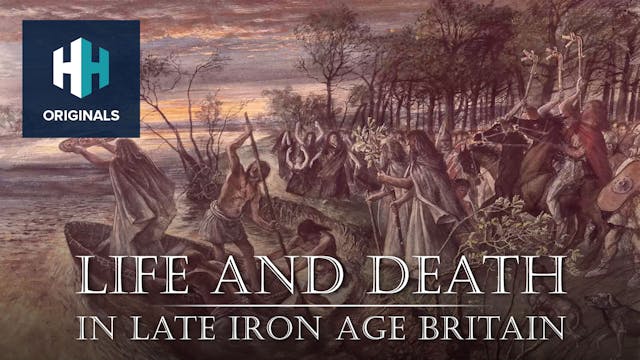On November 4th 1922 a breathless archaeologist, who had spent his life working in Egypt, wrote a hurried diary entry: “First steps of Tomb Found”. This was the very moment that Howard Carter found the entrance to the tomb of Tutankhamun.
In this very special film, shot in Egypt and England, Dan Snow commemorates the centenary of the most famous archaeological discovery of them all - walking in the footsteps of Howard Carter as he retraces the story of the discovery, from the beginnings of Carter’s career as a
young artist recording reliefs in Hatshepsut’s magnificent temple, to the house he built especially close to the Valley of the Kings thanks to the support of Lord Carnarvon.
The History Hit team has gained access to key places associated with this historic story: Highclere Castle, home of Lord Carnarvon; Tutankhamun’s Tomb in the Valley of the Kings, and his famous golden treasures in the Egyptian Museum, Cairo, which we explore with conservator Eid Murtah.
And Dan discovers that there is another side to this story, revealed in Oxford - Howard Carter’s extensive records are stored here. Dan gets up close to key objects in the Bodleian Weston Library’s exhibition ‘Tutankhamun - Excavating the Archives’, including the famous journal entry that, as Carter first gazed into the dark of the tomb, he told Carnarvon “It is wonderful”.
In Oxford’s Griffith Archive, Dan explores the records in detail with curator Daniella Rosenow. The original glass plate negatives reveal how the tomb looked as Carter opened it, with now familiar objects covered in flowers and linens, carefully placed there as the nineteen year old pharaoh was buried in 1323 BC. It presents a very different image of the objects that we now picture cleaned up and conserved - here they are in a much more immediate moment just as Carter uncovered them. And in a beautiful additional project, Ellie Murphy, a florist from Oxford, painstakingly makes an exact recreation of the floral wreath that adorned Tutankhamun’s outer coffin. It helps remind us of the humanity at the heart of this story: the incredible dedication of the archaeological team and the death of a young pharaoh that still inspires us today.
Up Next in Ancient
-
Life and Death in Late Iron Age Britain
Roman connections with Britain stretch back to (at least) the mid 1st century BC, but what has archaeology revealed about the Late Iron Age British societies they interacted with? Do we have any concrete evidence for the druids? Was human sacrifice a thing? Sit back and enjoy as experts provide a...
-
Rodin and the Art of Ancient Greece
Born in Paris in 1840, François-Auguste-René Rodin is quite possibly the most famous sculptor in recent history. Considered by many to be the first ‘modern’ sculptor, his works such as ‘The Kiss’ and ‘The Thinker’ have become iconic throughout the world. He possessed a unique ability to model a c...
-
Ancient Greece
Did the Ancient Greeks really invent the olympics? What did they wear? How did they party? What did Ancient Greek music sound like?
Host of 'The Ancients' podcast, Tristan Hughes, answers the most searched Google questions about Ancient Greece.




37 Comments